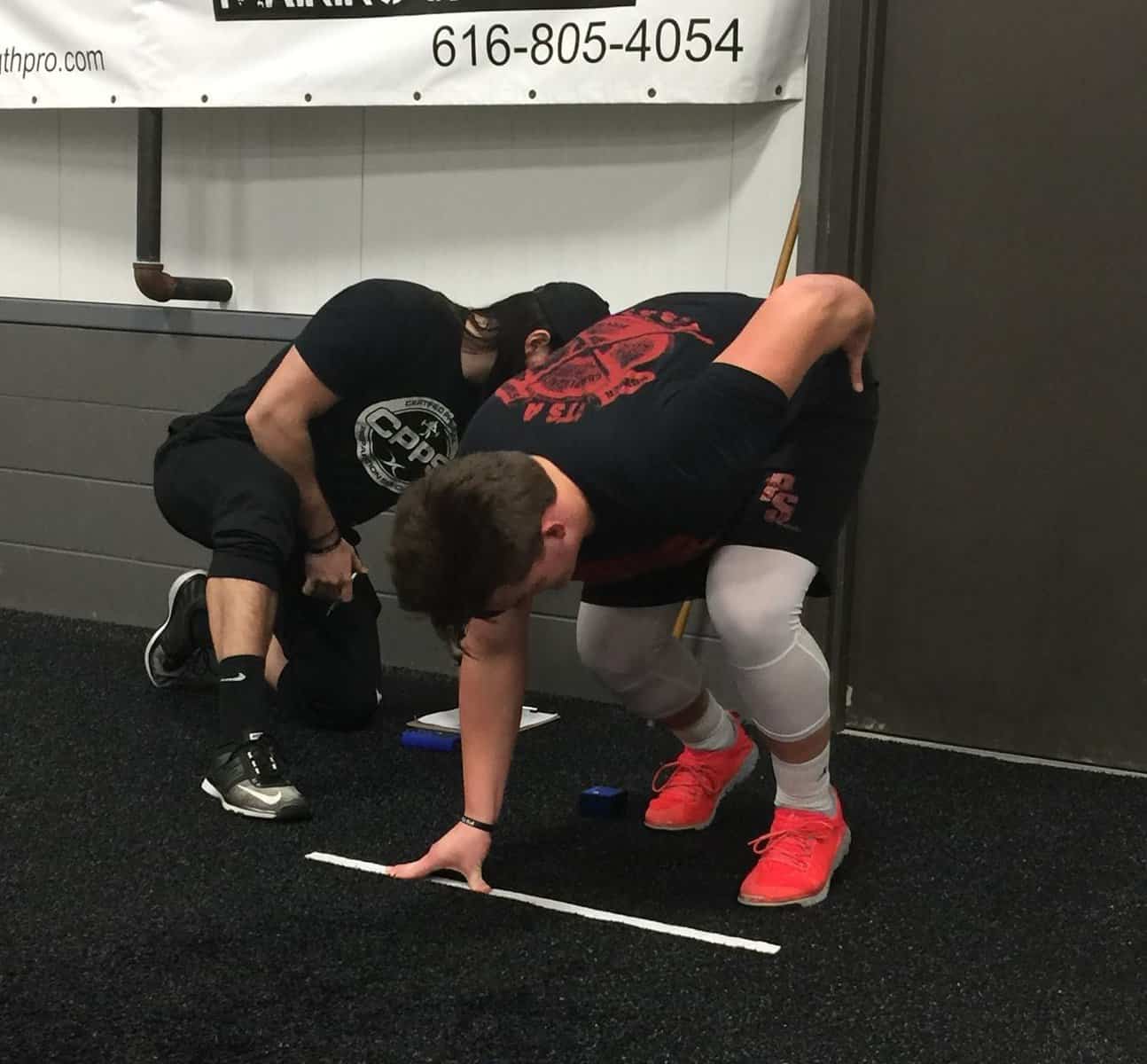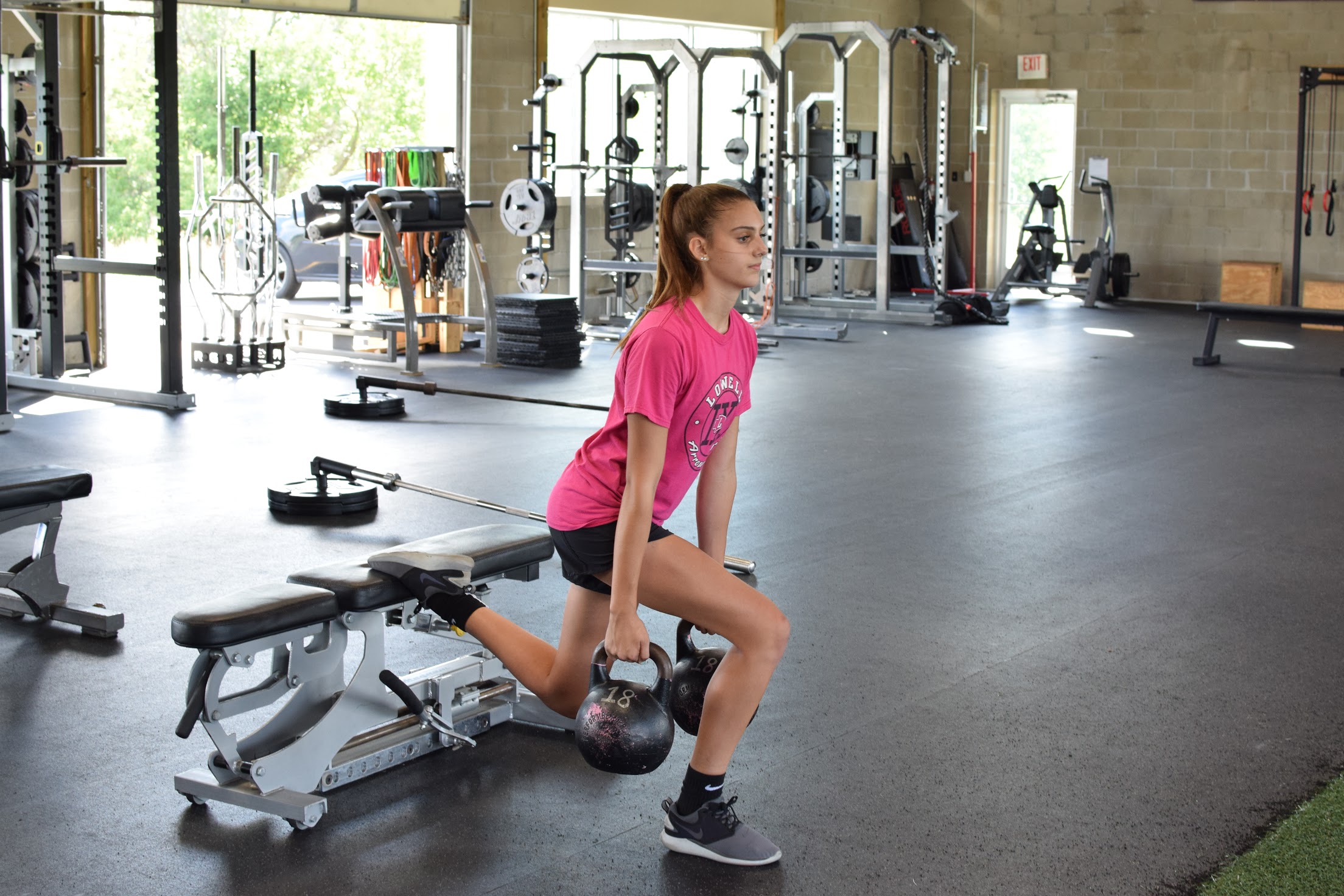Blog
Are You Getting Results? Here’s how to tell…

An integral part of our athlete training is performance testing. New athletes are tested in relative strength, speed, power, and body composition when they begin, and all of our athletes are tested before the start of each sports season to track results. When we say performance testing we are not referring to common “1-rep max” testing. We have moved away from this for a couple of reasons outside the scope of this article.
The Tests and Why
Our athletes perform tests such as a 10yd sprint and push-ups (among others), and an optional InBody screening for body composition. We have found these tests to be simple, safe, relatively unbiased, and a pretty good cross-section of athletic ability for most sports. We complete multiple gym-wide testing periods throughout the year, which is an investment of major time and energy, but we believe the process is vitally important for many reasons.
Most importantly, objective measurement allows our athletes to establish where they’re starting, to set goals, and to evaluate their achievement of those goals. Accountability is absolutely vital to our PowerStrength culture and our athletes’ long term development because many live in a world where participation trophies, instant gratification, and mediocrity are acceptable. We prefer to teach truly hard work, accountability, consistency, delayed gratification, competition, and a love of the process of development. We believe this mindset towards training yields the best results.

Throughout their time with us, everyone knows they will be measured and held accountable. It can be intimidating to have their weaker capacities exposed, and at the beginning, many athletes aren’t excited about testing. They learn, however, that competition is healthy and that accountability is earned through dedication to their goals. As we approach that next post-testing the gym energy is huge, and everyone can’t wait to finally see how all their hard-won strength, power, and speed translate. Athletes who train many seasons and years with us get to test many times and have an incredible track record of their development to show for it.
Example 1
Sam Tholl, a long-time PSTS disciple, Athlete of the Month recipient, and middle school athlete now through to high school, has gained 25 pounds of solid weight since his first official testing in 2017. In that same period, he’s decreased his 10-yard sprint by .25 seconds and added 8.5 inches to his vertical jump, 13 inches to his broad jump, and 20 chin-ups…all while playing lacrosse year-round and rehabilitating a knee injury. Obviously, his physical development is owed to many factors, not just training, but it’s great to have that history we can look back on and celebrate.

Results Guide Constant Improvement
Likewise, objective measurement and tracking the data that arises is one of the methods by which we hold ourselves accountable to a high standard of programming and coaching. Upholding those high standards is the means by which we deliver repeatable results at PSTS. We continually learn new training methods, adapt to changing athlete populations, get new and interesting equipment, refine our practices, and refine our coaches. During each training block around 10-15% of the training method, structure, and/or coaching is new. At the end of the block, we use real statistics to evaluate the new parts and continually whittle closer to what actually works.
There is no such thing as a perfect program or perfect coach, but if we can skip the ego and really trim the fat time and time again, the goal is that we’ll get more efficient and responsible with our athletes’ valuable time and effort. Better results in the same, or less, time is always great.
Example 2
In our 12 weeks of training with Cornerstone University’s volleyball team in 2017, our testing showed the athletes got immensely stronger but didn’t quite make the improvements in power output (10-yard sprint and vertical) we were looking for. That’s not to say the girls didn’t make gains – they still ran faster and jumped 2 inches higher in their vertical, but we knew we could do better.
We adjusted for the 2018 training period, and they improved their increase in power output greatly while still gaining the strength and movement quality we look for. On average, they decreased their 10-yard sprint time by another tenth of a second (-.04 versus -.14) and increased their vertical by another inch (2 versus 3). We would not have been able to make the adjustments we did without accurate, consistent testing data. Moving forward we’ll continue to refine what works. They are currently training with us and this period looks to be their best yet.

Communication of Results
Finally, after each testing, we send parents a progress report so they can get a handle on the measurable results their athlete has earned. We are the first to recognize some of the BEST effects of training at PSTS (confidence, character development, resilience, etc.) aren’t directly measurable, and parents are a witness to these changes over time. Our reports simply add some objective numbers to help illustrate, reinforce, and celebrate the effectiveness of quality lifestyle change.
This report also holds us accountable as coaches to maintain and deliver on our high standard and reputation for results. At times an athlete won’t improve in EVERY test and we have to own this result; e.g. a football player gained 20lbs and ran faster, but his chin-ups stayed the same. Thus begins the process of working with the athlete and with the parents to find how we can better serve them and affect greater change in the future. Coaching is about making adjustments so that is what we are always doing. It’s not comfortable to acknowledge an athlete may not have improved as much as they could have, but it’s much better to be uncomfortable and improving than comfortable and stagnant.

Example 3
One of our great, very athletic gymnasts started her first 6-months with us making incredible gains. In those beginning testing periods, she smashed her old numbers and grew immensely, and went into her 2017 season with newfound ability and confidence. After the season (which runs all the way into summer) she got back to training to begin her preparation for this year. She was having trouble getting to the gym and being that she is a high-level athlete with a pretty huge work capacity we just couldn’t get her enough work to help her further improve.
Her fall testing reflected this struggle, so we had to have that tough conversation with her and her family. We made changes in her work in the gym, they adjusted their schedule to get her to the gym more often, she began training in class at school, and we can’t commend them enough for their swift course correction and support.
In her next testing before the start of the 2018 season she beat all her previous numbers, set the gym chin-up record, felt great, and she’s now having another dominant year. This turnaround in results wouldn’t be possible without her and her family’s commitment and sacrifice, but also wouldn’t be possible if we didn’t test her or have the honesty to examine the process and get her what she needs.

Conclusion
In summary, we believe consistent measurement breeds accountability and ownership of the process in our athletes. Likewise, we as a staff use testing as a valuable metric to continually evaluate our performance relative to our standards. Finally, we lay this process bare and give parents and athletes as much information as possible so they may reflect, evaluate, have a hand in the process, and celebrate hard-earned wins. They have a right to know if they are improving.
Testing is vitally important to us, and we are thankful to have had the opportunity to develop the process and refine our methods through the years. As this is published we are in another testing week – proving to be the best one yet. We look forward to celebrating the successes and results of our dedicated athletes once again.

